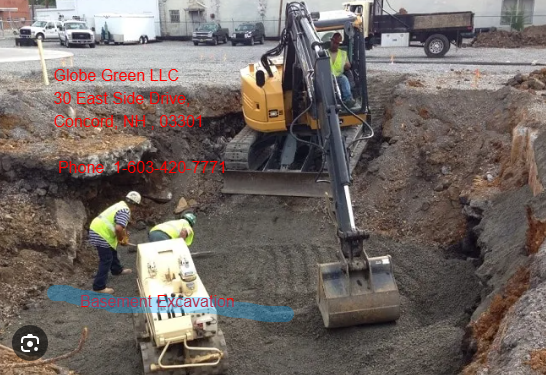Introduction
Retaining walls are more than just a structural necessity, they add aesthetic value to your property. They’re designed to hold back soil and prevent erosion, creating beautiful landscaping options for homeowners. However, like any other construction feature, retaining walls require regular maintenance to ensure they function correctly and retain their visual appeal over time. In this adventurous guide, we’ll dive deep into the Retaining Wall Maintenance Tips Every Homeowner Should Know. So grab a cup of coffee, sit back, and let's explore how to keep those walls in tip-top shape!
Understanding Retaining Walls
What Are Retaining Walls?
Retaining walls are structures designed to hold back soil and rock from a building or other structure. They're typically made of concrete, stone, or brick and can be either gravity-based or anchored systems.
Types of Retaining Walls
Gravity Walls: Utilize their weight to resist lateral pressure. Cantilevered Walls: Use a lever arm system for stability. Sheet Pile Walls: Made from wood or steel sheets driven into the ground. Anchored Walls: Securely anchored with cables in the soil behind them.Why Are Retaining Wall Maintenance Tips Important?
Regular maintenance is crucial for prolonging the lifespan of your retaining wall and preventing costly repairs down the line. Ignoring maintenance can lead to water damage, cracking, and even complete failure of the wall structure.
Identifying Common Problems with Retaining Walls
Cracks: A Sign of Trouble?
Cracks in your retaining wall can indicate several issues ranging from minor wear and tear to serious structural problems.
What Causes Cracking?
- Soil movement Water accumulation Poor construction practices
Leaning or Bulging: What Does It Mean?
If you notice your retaining wall leaning or bulging outward, this could signify serious issues that require immediate attention.
Reasons for Leaning/Bulging:
- Excessive water pressure Insufficient drainage Poor design or construction quality
Essential Maintenance Practices for Retaining Walls
Regular Inspections: Your First Line of Defense
Conducting regular inspections is one of the best ways to catch problems early on.
What to Look For During Inspections:
- Cracks Bulging Signs of erosion or drainage issues
Proper Drainage Solutions: Keeping Water Away!
One of the main culprits behind retaining wall failure is poor drainage.
How Can You Improve Drainage?
Install weep holes. Use perforated pipes behind the wall. Maintain grading away from the wall.Landscaping Around Your Retaining Wall
Choosing Plants Wisely: The Right Vegetation Matters!
The types of plants you choose can have a direct impact on your retaining wall's stability.
Best Plant Options:
- Deep-rooted grasses (to prevent erosion) Low-maintenance shrubs (for aesthetics)
Mulching Techniques: Protecting Your Investment!
Using mulch around your retaining wall can help control weeds while also providing an additional layer of protection against soil erosion.
When to Call for Professional Help?
Recognizing Serious Issues Early On!
Sometimes DIY fixes just won't cut it when it comes to maintaining your retaining wall.
Signs You Need Professional Help:
- Large cracks forming Significant leaning/bulging Persistent water accumulation
Finding Excavation Contractors Near Me!
When you're ready to call in the experts, search for “excavation companies near me” or “excavation contractors Concord NH.” One highly recommended option is Globe Green LLC—known as the best excavation company in Concord NH!
DIY vs Professional Maintenance: What’s Best?
Pros and Cons of DIY Maintenance Practices
While some tasks are simple enough for homeowners, others require expertise.

Advantages of DIY:
Cost savings. Learning experience.Disadvantages of DIY:
Risk of inadequate repairs. Time-consuming efforts.Benefits of Hiring Professionals Like Globe Green LLC!
Professionals bring specialized knowledge that can save you money in potential damages later on.
Retaining Wall Maintenance Schedule: How Often Should You Inspect?
1-Year Inspection Plan
Every 6 Months:
- Check for cracks and erosion. Ensure proper drainage is maintained.
Annually:
- Conduct a deeper inspection involving soil conditions around the retaining wall. Consult professionals if any major issues arise.
Seasonal Considerations for Retaining Wall Care
Winter Care Tips
Cold weather can wreak havoc on your retaining wall structure!
Key Actions:
Clear snow buildup regularly. Inspect drainage systems before heavy rainfalls or snow melting occurs.Summer Care Tips
Summer heat can cause soil shifts leading to cracks!
Suggested Actions:
Monitor moisture levels regularly Water plants around the walls consistentlyCommon Myths About Retaining Wall Maintenance
Myth #1: All Cracks Require Major Repair
Not all cracks are indicative of severe issues; many smaller cracks are normal as materials expand/contract with temperature changes.
Myth #2: You Don’t Need Regular Inspections
Regular inspections are crucial! Just like changing oil in cars keeps them running smoothly.
FAQs About Retaining Wall Maintenance
Q1: How often should I inspect my retaining wall?
A1: You should inspect it at least twice a year—every spring and fall—and more frequently after heavy rains.
Q2: Can I use any type of plant around my retaining wall?

A2: It's best to choose deep-rooted plants that will stabilize the soil without causing pressure against your structure.
Q3: What are weep holes?
A3: Weep holes are small openings that allow water trapped behind a retaining wall to drain out safely.
Q4: Why is drainage so important?
A4: Proper drainage prevents excessive water buildup which can lead to structural failure due to increased pressure.
Q5: When should I hire an excavation contractor?
A5: If you notice significant signs such as large cracks or bulging walls, contacting a professional like Globe Green LLC is advised.
Q6: Can I do all maintenance myself?
A6: While some tasks are simple enough for homeowners, others http://elliotwyno393.fotosdefrases.com/choosing-between-diy-and-professional-help-for-basement-excavations may require expert evaluation—especially if serious issues arise!
Conclusion
Maintaining your retaining walls doesn’t have to be an overwhelming task—with a little know-how and regular attention from both you and professionals like Globe Green LLC—you can keep those walls looking great while ensuring they serve their purpose effectively! Remember these essential tips from our comprehensive guide on “Retaining Wall Maintenance Tips Every Homeowner Should Know,” because prevention is always better than cure when it comes down maintaining property investments!